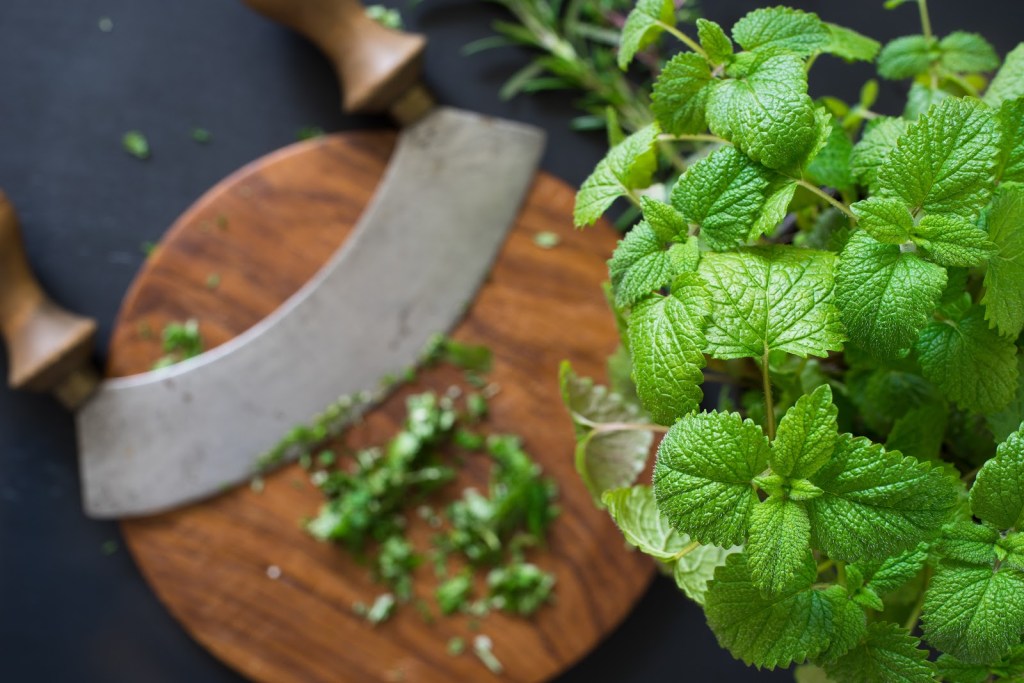Posted by: site admin @ 6:56 pm










 & vegetables
& vegetables 





























 Plants
Plants  in pots
in pots 
 To live like free birds
To live like free birds 

 for Hunger along with Meditative Mindful Swimming
for Hunger along with Meditative Mindful Swimming  to Attain Eternal Bliss by Eternal,Glorified,Friendly,
to Attain Eternal Bliss by Eternal,Glorified,Friendly, from Christianity,Islam, Buddhism,Judaism,Hinduism,
from Christianity,Islam, Buddhism,Judaism,Hinduism,Eternal Glorified Friendly Benevolent Compassionate AWAKENED ONE’s UNIVERSE IS WITHIN YOU.
his 29th year he renounced the worldly life and exchanged his princely
career for that of a homeless mendicant. After six years of hard
striving he at last attained his goal: deliverance from the round of
rebirths, or Samsara.
there is one person whose birth into this world is for the welfare and
happiness of many, out of compassion for the world, for the gain and
welfare and happiness of gods and humanity. Who is this one person? It
is the Tathâgata, who is a Worthy One, a Fully Awakened One ~ Anguttara
Nikaya”
“Hard is it to be born a man; hard is the life of
mortals. Hard is it to gain the opportunity of hearing the Sublime
Truth, and hard to encounter is the arising of the Buddhas.~ Dhammapada
182″

Verse 182. Four Rare Opportunities
Human birth is hard to gain,
hard for mortals is their life,
to come to Dhamma True is hard,
rare the Buddha’s arising.
Explanation: It is rare that one is born a human being, in
this cycle of rebirth. It is difficult and rare to get the opportunity
to hear the good teaching, It is, indeed, rare for the birth of a
Buddha to occur.
no external refuge; with the Dhamma as your island, the Dhamma as your
refuge, seeking no other refuge ~ Maha Parinibbana sutta”
“Driven
by fear, men go for refuge to many places — to hills, woods, groves,
trees and shrines. Such, indeed, is no safe refuge; such is not the
refuge supreme. Not by resorting to such a refuge is one released from
all suffering. He who has gone for refuge to the Buddha, the Teaching
and his Order, penetrates with transcendental wisdom the Four Noble
Truths — suffering, the cause of suffering, the cessation of suffering,
and the Noble Eightfold Path leading to the cessation of suffering.
This,
indeed, is refuge secure. By seeking such refuge one is released from all
sorrow.
~ Dhammapada 188-192″
 |
Verse 188. Fear Stricken Masses
Explanation: Human beings who tremble in fear seek refuge |
 |
Verse 189. Those Refuges Do Not Help
Explanation: These are not secure refuges. The are not the |
 |
Verse 190. Seeing Four Noble Truths
Explanation: If a wise person were to take |
 |
Verse 191. The Noble Path
Explanation: The four extraordinary realities are suffering; |
 |
Verse 192 The Refuge That Ends All Suffering
Explanation: This refuge in the Triple Refuge is, of course, |
have heard that on one occasion the Blessed One was staying at Varanasi
in the Game Refuge at Isipatana. There he addressed the group of five
monks:
are these two extremes that are not to be indulged in by one who has
gone forth. Which two? That which is devoted to sensual pleasure with
reference to sensual objects: base, vulgar, common, ignoble,
unprofitable; and that which is devoted to self-affliction: painful,
ignoble, unprofitable. Avoiding both of these extremes, the middle way
realized by the Tathagata — producing vision, producing knowledge —
leads to calm, to direct knowledge, to self-awakening, to Unbinding.
what is the middle way realized by the Tathagata that — producing
vision, producing knowledge — leads to calm, to direct knowledge, to
self-awakening, to Unbinding? Precisely this Noble Eightfold Path: right
view, right resolve, right speech, right action, right livelihood,
right effort, right mindfulness, right concentration. This is the middle
way realized by the Tathagata that — producing vision, producing
knowledge — leads to calm, to direct knowledge, to self-awakening, to
Unbinding.
this, monks, is the noble truth of stress:1 Birth is stressful, aging
is stressful, death is stressful; sorrow, lamentation, pain, distress,
& despair are stressful; association with the unbeloved is
stressful, separation from the loved is stressful, not getting what is
wanted is stressful. In short, the five clinging-aggregates are
stressful.
this, monks, is the noble truth of the origination of stress: the
craving that makes for further becoming — accompanied by passion &
delight, relishing now here & now there — i.e., craving for sensual
pleasure, craving for becoming, craving for non-becoming.
this, monks, is the noble truth of the cessation of stress: the
remainderless fading & cessation, renunciation, relinquishment,
release, & letting go of that very craving.
this, monks, is the noble truth of the way of practice leading to the
cessation of stress: precisely this Noble Eightfold Path — right view,
right resolve, right speech, right action, right livelihood, right
effort, right mindfulness

system of penalties the Buddha worked out for the rules is based on two
principles. The first is that the training aims primarily at the
development of the mind. Thus the factors of intention and perception
often determine whether or not a particular action is an infringement of
a rule. For instance, killing an animal accidentally is, in terms of
the mind of the agent, very different from killing it purposefully, and
does not count as an infringement of the rule against killing.
are a few rules where the factors of intention and perception make no
difference at all — such as in the rule forbidding a monk to drink
alcohol — but they almost always deal with situations where one would be
expected to be mindful and perceptive enough to know what’s going on,
and so these rules too help in the training of the mind.
any event, the system of analyzing each offense into the factors of
effort, object, perception, intention and result shows how adherence to
the rules leads directly to the development of concentration and
discernment. If a monk is careful to view his actions in terms of these
factors, he is developing mindfulness, an analytical approach to events
in the present, and persistence. These are the first three factors for
Awakening, and form the basis for the remaining four: rapture, serenity,
concentration and equanimity.
second principle used in determining penalties is based on the Buddha’s
observation to Ananda, one of his chief disciples, that friendship and
companionship with the good is the whole of the religious life. Anyone
who approaches the Dhamma seriously should be wise enough to realize
that without the opportunity of associating and learning from people who
are experienced on the path, it is well nigh impossible to make any
progress on one’s own. The monks are thus expected to value their good
standing vis a vis the well-behaved members of their group, and so the
system of punishments worked out by the Buddha revolves entirely around
affecting the offender’s status within the Community.
a monk breaks one of the four most serious rules — the pārājikas
(Pr)defeat — he is expelled from the Community for life. If he breaks
one of the next most serious classes of the rules — the saṅghādisesas
(Sg)entailing Communal meetings — he is put on probation for six days,
during which time he is stripped of his seniority, is not trusted to go
anywhere unaccompanied by four other monks of regular standing, and
daily has to confess his offense to every monk who lives in or happens
to visit the monastery. At the end of his probation, twenty monks have
to be convened to reinstate him to his original status.
next three levels of rules — nissaggiya pācittiya (NP)entailing
forfeiture and confession, pācittiya (Pc)entailing confession, and
pāṭidesanīya (Pd) — entail simple confession to a fellow monk, although
the NP rules involved an article that has to be forfeited — in most
cases temporarily, although in a few cases the object has to be
forfeited for good, in which case the offender has to confess his
offense to the entire Community.
a monk commits an offense and refuses to undergo the penalty, the
Community may decide how seriously they take the matter. Since there is
no monks’ police beyond the individual’s conscience, it may often happen
that no one else knows of the offense to begin with, and nothing is
done. If however it becomes common knowledge, and the Community regards
it as a serious matter, they should talk privately with the monk to help
him see the error of his ways. If he is recalcitrant, they may strip
him temporarily of his status, either by censuring him, stripping him of
his seniority, driving him from the Community, or suspending him from
the Order of monks as a whole. If the offender sees the error of his
ways and reforms his behavior accordingly, the Community may return him
to his former status.
of course there may be some hardened souls among the monks who are
unfazed by punishments of this sort, but we should note that the Buddha
saw no use for physical coercion in enforcing his rules. If a monk had
to be physically forced into abiding by the training, his heart wouldn’t
be in it, and there is no way that he could benefit from it. Such monks
the Buddha considered beyond the pale, although he allowed them to stay
on in the Community in hopes that eventually their conscience would get
the better of them. In the meantime, the law of karma would guarantee
that in the long run, they would not be getting away with anything at
all.
final two levels of rules in the Patimokkha do not give a particular
penalty. The sekhiya (Sk) trainingsrules — dealing primarily with
etiquette — simply state that one should work at following them. The
Sutta Vibhanga explains that if one oversteps them out of disrespect,
one should confess the fact. The adhikaraṇa samatha (As) the settlement
of issues rules are not so much rules as they are principles to follow
in dealing with issues that arise in the Community. If monks try to
settle an issue without following these principles, their decision is
invalid, and they must confess their wrongdoing to other monks who took
no part in the decision.
Monastic Code IChapter 1PatimokkhaThe Pāṭimokkha is available to us in
several recensions, some in Indic languages,others in Tibetan or Chinese
tran…

Gardening Tips
How to Get Started With Low-Light Plants

If you don’t have much room for a backyard garden or have
less-than-ideal growing conditions indoors, you might be feeling like
gardening isn’t an option. Fortunately, that’s not the case at all.
You can have a thriving, easy-care garden with low-light plants.
Learn a bit about why low-light plants could be a fit for you, along
with how to set up your indoor garden for success. From tabletop
houseplants to mushrooms, microgreens, and more, you can put your green
thumb to work inside without missing a beat.
Why Choose Low-Light Plants?
Not every gardener has perfect planting conditions indoors and out.
While there are plants that grow well without being in direct sunlight,
it can be tricky finding the sweet spot in shadier situations.
The good news is that there are many plants that grow well in
low-light conditions, making them a good choice for beginner gardeners
or those who prefer more low-maintenance gardening.
Even if you have a north-facing patio or window sills, rest assured
you can find low-light plants well-suited to the space you have. You can
perk up a porch with a hanging basket (or two) or add a touch of
greenery to your living room. Pairing your plants with the natural light
you do have can mean the difference between plants that flourish and
ones that flop.
3 Tips for a Thriving Indoor Garden
While indoor plants can be easier to maintain than an outdoor garden,
it still pays off to put in the time and effort to get it started
right. Here are three ways you can set up your garden for success.
1. Pick the Perfect Containers
Container size might not seem like a big deal, but trust us when we
say it is. Pint-sized pots may be great in the beginning, but your plant
can outgrow them quickly. If you notice your plant’s roots are breaking
through the pot or your plant is constantly tipping over and making a
mess, it’s time for an upgrade. Depending on how quickly your plants
grow, be ready to transplant them into bigger pots once a year.
In the event your plants outgrow your indoor space, consider moving them outside. Back to the Roots Fabric Raised Garden Bed
is portable, made from durable felt, and comes together in minutes to
give you extra room for fruits, veggies, and more when you need it.
2. Lay the Foundation
Like their outdoor counterparts, low-light indoor plants benefit from high-quality organic potting soil.
The right potting mix will have an array of organic matter and
beneficial bacteria to help your plant’s roots get the nutrients they
need to thrive. And because it’s organic, you’ll be keeping pesticides
and other chemical nasties off your plate and out of your home.
If you feel like your plants need a boost, consider picking up organic fertilizer at your local Home Depot or Walmart Garden Center.
The right fertilizer will support your plant’s growth right from the
start and improve nutrient absorption and overall soil quality.
3. Be Mindful of Watering
An indoor garden
doesn’t benefit from nature’s rain showers, so you must make sure to
water your plants adequately. If you’re unsure whether your plant is
ready for a drink, test the soil moisture by sticking your finger in it.
If it feels moist but not soaked , you and your plant are good to go.
Overwatering can be just as much of an issue for your plants as
underwatering. Even though it might be tempting to water them on a
schedule, you could run the risk of giving your plants more than they
need. Using containers with drainage holes is another way you can avoid
drowning your plants.
Don’t worry if you don’t get it quite right at the beginning of your
gardening adventures. Things like where you live and humidity levels in
your home can influence how much water your plant friends will need
through the season.
Choosing Your Low-Light Plants

Low-light conditions don’t have to be a barrier to having an indoor
garden you and your family love. With so many plants to choose from, you
have plenty to explore and experiment with. Browse this list of the
best low-light plants to grow indoors to get started.
Microgreens
Interested in growing your own food?
One of the simplest ways to begin is with microgreens. Because they
only need a few hours of direct sunlight every day, they’re perfect for
low-light environments. Plus, you get to harvest your microgreens in a matter of days, not weeks!
You can add your home-grown microgreens to sandwiches, soups, and salads. They’re chock-full of antioxidants too (up to 40 times the nutrients compared to mature plants), and make a great addition to a healthy lifestyle.
To get started in minutes, check out a Back to the Roots Microgreens Grow Kit,
where you can choose from three different microgreen varieties. It even
comes with a white ceramic planter, so your greens will fit right into
your decor.
Because Back to the Roots uses only 100% certified organic and
non-GMO domestically grown seeds, you can relax knowing you’re giving
your family the best quality microgreens in as few as seven days.
Mushrooms
Mushrooms might be the ultimate low-light plant to include in your
indoor gardening projects as they don’t require any sun exposure. In
fact, they prefer dark, humid environments. Unlike other plants on this
list, your mushrooms will be happiest tucked away in a dark corner of
your kitchen (like inside a cabinet).
The easiest way to start growing mushrooms is with a kit. Like all of our grow kits, the Back to the Roots Mushroom Grow Kit
gives you everything you need to kick off your mushroom garden in just
10 days. You’ll receive a spray mister, mushrooms spawn, and a
downloadable curriculum so kids can learn all about the fascinating
science behind mushrooms and how they grow.
Fruits and Vegetables
While some fruits and vegetables aren’t entirely suited to low-light
areas, you can still have a successful indoor garden if you make some
accommodations.
A few options that grow successfully indoors:
To help your plants grow their best, be sure and pick up an LED grow light. It can mimic the sun’s natural rays and make it possible for you to enjoy freshly picked fruits and vegetables year-round.
Growing fruits and vegetables inside can be made even simpler with a hydroponic gardening system.
This fun and easy system is entirely self-contained, so you never have
to worry about overwatering or maintaining soil quality.
Houseplants
Low-light houseplants are a terrific entry point for gardeners who
don’t feel ready to start growing their own food but want to bring
nature indoors. You can even try growing some of them in a terrarium.
While there are many low-light plants you can grow inside, these are some of our favorites. We’ve included their botanical and common names when possible:
- Pothos or Devil’s Ivy (Epipremnum aureum)
- Peace Lily (Spathiphyllum)
- Philodendron
- Snake plant or Mother-in-Law’s Tongue (Sansevieria trifasciata)
- Chinese Evergreen (Aglaonema commutatum)
- ZZ Plant (zamioculcas zamiifolia)
- Dumb Cane (Dieffenbachia)
- Prayer Plant (Maranta leuconeura)
- Lucky Bamboo (Dracaena sanderiana)
- Swiss cheese plant (Monstera Deliciosa)
- Spider plant (Chlorophytum comosum)
- Zebra or rattlesnake plant (Calathea)
- Parlor palm (Chamaedorea elegans)
- Staghorn fern (Platycerium bifurcatum)
- Bird’s nest fern (Asplenium nidus)
- Succulents
- Bromeliads
- Peperomia
- Cast Iron Plant (Aspidistra)
Start an Indoor Garden With Low-Light Plants

Low-light plants make it easy to start an indoor garden and grow your
own food without perfect lighting conditions. Growing your own food
also allows you to connect with nature in new ways while supplying you
and your family with organic nourishment all year long.
For more ways to grow fruits and vegetables indoors and out, keep browsing our Back to the Roots blog.
Posted by: site admin @ 1:27 pm










 & vegetables
& vegetables 





























 Plants
Plants  in pots
in pots 
 To live like free birds
To live like free birds 

 for Hunger along with Meditative Mindful Swimming
for Hunger along with Meditative Mindful Swimming  to Attain Eternal Bliss by Eternal,Glorified,Friendly,
to Attain Eternal Bliss by Eternal,Glorified,Friendly, from Christianity,Islam, Buddhism,Judaism,Hinduism,
from Christianity,Islam, Buddhism,Judaism,Hinduism,How To Grow Herbs: A Step-By-Step Guide
sabbe satta bhavantu sukhi-tatta
TIPITAKA
TIPITAKA AND TWELVE DIVISIONS
Brief historical background
Sutta Pitaka
Vinaya Pitaka
Abhidhamma Pitaka
Twelve Divisions of Buddhist Canons
Nine Divisions of Buddhist Canons
Sutta Piṭaka


If you love to cook and want to grow
your own food but don’t feel confident enough to start a veggie patch,
learning how to grow herbs is the way to go. Fresh herbs can elevate
your food from a bland concoction to a delicious dish.
Herbs have been appreciated for
thousands of years by many cultures. Their flavors and medicinal
properties were once considered gifts of the gods.
One of the best things about culinary
herbs is that you don’t need a lot of space to grow them. You can
quickly start your very own indoor herb garden with just a few basic
things: high-quality seeds, a sunny windowsill, organic potting soil, and lots of TLC.
If you’re tired of buying packaged
herbs that shrivel up in a matter of days, this step-by-step guide can
give you the confidence to grow your own herbs successfully. The
varieties on this list are some of the easiest to start from seed, so
they’re perfect for beginners or anyone who thinks they don’t have a
green thumb.
How To Grow Herbs: Getting Started

First things first: Most herbs are
native to the Mediterranean, so the trick to supporting their growth is
to provide similar conditions. This means plenty of sun, moderate
temperatures, and soil with good drainage.
If you plan to grow and maintain your
kitchen herb garden indoors, you can start at any time of the year. But
if you’re thinking about creating a little herb corner in your garden
or outdoor planter, then the best time to start planting herbs is
spring, once the danger of frost has passed.
If you’re not sure when that is, feel free to use the Back to the Roots grow calendar to find out the date of the last frost based on your location.
Best Conditions
Most culinary herbs thrive in full
sun, between 7-8 hours of exposure — Mediterranean conditions, remember?
This is the ideal amount of time for them to produce the essential oils
that make them so fragrant and delicious.
Some herbs — like basil, parsley, and
cilantro — may enjoy partial shade from the hottest midday sun during
the scorching summer months.
When you grow herbs indoors, the best
spot for them is by a sunny window. If your house doesn’t have enough
natural sun, consider investing in a grow light.
These helpful accessories not only provide your plant with the
necessary amount of light they crave, but they also encourage them to
grow fuller.
Avoid using garden soil if you’re
growing your aromatic herbs inside containers or pots, as it doesn’t
provide proper drainage. Opt for a well-draining organic potting mix,
which is engineered specifically for this type of gardening.
Terra cotta pots with drainage holes
are also a better option than plastic planters, as they provide more
aeration for the plants and help prevent moldy roots.
Herb plants are perfect for container
gardening, and you can even grow different types in the same container,
except for certain species (more on that later). A great perk of
growing your herbs inside pots is that you can relocate them, ensuring
they always have ideal growth conditions.
Before sowing your seeds, make sure to read the seed packets
carefully. They provide lots of important information, including how
much spacing to leave between seeds, growing season, and what kind of
sun exposure they prefer.
When it comes to watering your herbs,
keep in mind that overwatering is more likely to kill them than
underwatering. A great trick to assess the soil’s moisture level is to
stick your finger an inch or two in the pot.
If it’s still quite moist, skip
watering. If the soil is loose, then it’s time to hydrate your herbs.
Aromatic plants enjoy less frequent yet thorough waterings rather than
superficial frequent waterings. The latter can encourage roots to come
to the soil’s surface to draw water, which you want to avoid. You want a
deep root system that provides your plant with stability and strength.
Seeds or Seedlings?
Just like any other plant, you can either start herbs from seed or buy them as young plants — or seedlings — at your local plant nursery. Even though starting with seeds has its advantages, you may feel more confident going for seedlings if this is your first attempt at growing herbs.
If you’re looking for a foolproof growing kit for beginners, check out Back to the Root’s kitchen herb garden kit,
which comes with everything you need to start your own herb corner. It
features organic basil, mint, and cilantro seeds, and a custom soil
blend that provides your herbs with all the nutrients they need to grow
strong and sturdy.
Back to the Roots growing kits also
come with a zero-risk gardening policy. In other words, you’ll get new
seeds until you grow your herbs successfully.
Annual, Biennial, and Perennial Herbs
All plants fall into one of three
categories — annual, biennial, and perennial — and herbs are no
exception. It’s essential to know which plant is what, so you know how
they behave and what to expect when you start to grow your culinary
herbs.
- Annual herbs:
This variety germinates, blooms, sets seeds, and dies all in one year.
They will only come back to life the following year if they’ve dropped
seeds that germinate successfully in the spring. Basil, cilantro, and
marjoram are examples of annual herbs. - Biennial herbs:
These plants have a life cycle of approximately two years, which means
they germinate and grow one year and bloom and die the year after.
Parsley and chives are biennial plants. - Perennial herbs:
Perennial plants live for many years. Depending on your local climate,
they may continue to provide through the winter months. More often than
not, they shed their leaves during the cold season (looking like dead,
dry sticks) as a protection mechanism. Perennials come back every year,
as they grow from the roots that have survived through the winter. Good
examples of this variety are thyme, mint, oregano, tarragon, and lemon
balm.
Harvesting
Harvesting is undoubtedly one of the
best and most enjoyable parts of herb growing. It’s also necessary to
encourage new leaf and branch growth.
When you’re harvesting herbs, the
best course of action is to snip them just above a natural junction or
lead node. When you do this, you’re stimulating new growth, which will
branch out on each side and make your plants grow fuller.
Annual herbs prefer small, regular
clippings until the end of their growing season or first frost. On the
other hand, perennials can handle a good prune, especially once the warm
season is in full swing. If you live in an area that commonly freezes
during the winter months, it’s best to avoid heavy pruning past August.
Once an aromatic herb starts to bloom
and flower, this is usually a clear signal that they are ready to begin
forming seeds and eventually hibernate for the season.
When this occurs, the edible leaves
become smaller, tougher, and more bitter. If you want to delay this,
simply pinch or snip off the flowering tips as soon as they pop out. If
they persist, it’s best to cut the entire flowering stem. By removing
the flowers, you’re ensuring your plant is directing its energy on
growing leaves.
9 Easy Herbs To Kick-Start Your Herb Garden
Now that you know the basics on how
to grow herbs, you’re ready to find out which aromatic plants are the
easiest and most versatile for your space. These are all traditional
herbs that will add that extra boost of flavor to your favorite dishes
and take your cooking to the next level.
1. Basil

If you love pizza, pesto, and
bruschettas, you must grow basil. There’s nothing quite like
freshly-picked basil sprinkled on top of a hot Margherita pizza. This
classic Italian herb loves regular clipping, as it helps the plant grow
less leggy — weak stems that make it floppy — and more rounded.
If you love fresh pesto, plant a
couple of basil plants to have a fresh supply anytime you crave this
delicious green sauce. Sowing the seeds 12-16 inches apart will ensure
the plants have plenty of space to grow.
2. Chives

Chives, along with spring onions, are
the ultimate savory garnish. Chopped chives are great sprinkled on top
of soups, roasted potatoes, avocado toast, and smoked salmon and cream
cheese bagels.
It’s one of the easiest culinary
herbs to grow, and it’s great to build up a new gardener’s confidence.
Make sure you plant them 4-6 inches apart and cut them two inches above
the soil every time you harvest. They usually grow back in the early
spring.
3. Cilantro

If you get confused about cilantro
and coriander, news flash: they’re the same thing. You call the leaves
cilantro and say coriander when talking about the seeds. Mystery solved!
This super versatile herb is common
in many different cuisines from Mexican to Mediterranean to Asian. It’s
perfect for chopping and adding to dishes to give them a fresh,
herbaceous taste.
However, when it comes to cilantro, you either love it or hate it.
This is due to this herb’s richness in aldehydes, a compound also found
in soap. Some people have a gene that allows them to detect this
substance, and they’ll claim that when they chew cilantro, it tastes
like a soap bar.
Plant your cilantro plants 6-8 inches
apart and make sure you protect them from the hot summer sun, as
they’ll bolt quickly and try to drop seeds fast.
4. Lemon Balm

Like chamomile, lemon balm is one of
the best calming herbs and valuable addition to your herb garden. It’s
part of the mint family, and once you smell it, you’ll detect a
delicious mix between mint and lemon. Use it fresh in desserts, salads,
to brew tea, and as a garnish for cocktails.
It should be consumed fresh and not
cooked. Otherwise, it will lose all its beautiful aroma. It’s quite
handy in herb gardening as it helps to repel mosquitoes and other pests.
It spreads quite vigorously like mint, so plant it by itself or with
another variety of the same family. Leave 12-18 inches between seeds to
allow for healthy growth.
5. Mint

When you think about summer herbs,
the first thing that might pop into your head is mint. This classic
aromatic herb has a distinct fresh smell that will go great with summer
salads, cocktails, and iced tea.
Chewing a few mint leaves or brewing them in tea is a common folk remedy for an upset stomach. This beautiful herb comes in many different varieties, so it may be challenging to choose just one.
For a more familiar smell, stick to
peppermint or spearmint. But if you love different aromatic herbs, keep
an eye out for chocolate mint. Its unique fragrance will remind you of
your favorite chocolate chip mint ice cream, and it’s great to brew some
comforting, cozy tea in the wintertime.
Like lemon balm, plant your mint inside containers, giving the seeds 18-24 inches of distance between them.
6. Oregano

Known to the ancient Greeks as “joy
of the mountain,” oregano is another excellent herb to boost your
confidence when trying to earn a green thumb. This fragrant herb is not
only delicious, but it has also been studied for its antifungal and antibacterial properties.
Also called the “pizza herb,” it’s
almost impossible not to think about this favorite Italian dish when you
smell dried oregano. If you find this culinary herb too strong for your
taste, try marjoram — a milder, less pungent, and sweeter tasting
variety of oregano.
It’s a prolific grower, so keep the seeds 8-10 inches apart when sowing the seeds.
7. Parsley

This leafy herb has a similar acidity
to that of lemons. Try chopping some fresh parsley and add it to a
salad to immediately experience the tanginess. For more flavor, never
cook it as it will lose all its taste and crunchy texture.
Expert gardeners claim that planting
parsley next to their rose bushes helps them grow healthier and enhances
the flowers’ fragrance. Provide a good 8-10 inches between each seed to
allow for healthy growth.
When harvesting, clip the stalks
which are further from the plant’s center to encourage more growth.
Don’t throw away the stems. Instead, chop them as they tend to hold more
flavor than the actual leaves themselves.
8. Tarragon
This lesser-known herb — also known
as French tarragon — is the perfect combination of sweet and bitter, a
bit like licorice. If you love making sauces, vinaigrettes, and
marinades, tarragon should be an essential addition to your herb
garden.
When sowing the seeds of this
perennial herb, make sure you leave a good 18-24 inches between each
plant as they grow quite bushy.
9. Thyme

Thyme is an earthy and sweet herb
that goes well with anything roasted. Potatoes, chicken, pumpkin, you
name it. It loves the sun, and it doesn’t need constant watering, so
it’s perfect for any would-be gardener living in a warm climate. When
sowing thyme seeds, make sure you leave 6-8 inches between them as this
plant grows rather bushy.
This Mediterranean herb loves being
trimmed, and the more you snip, the more it will grow. Thyme is quite
prolific, so if you end up with more thyme than you know what to do
with, try drying it. It tastes great dried and fresh. For a tangy
variety, look for lemon thyme.
Start Your Gardening Journey By Growing Herbs
If you think a veggie garden feels
like a daunting task for someone who has never planted anything,
starting with herb gardening can give you the skills and know-how to get
you started in the plant world.
Knowing how to grow herbs is not only
easy but incredibly fun and rewarding. You don’t need a lot of
resources or space. All you need is the knowledge found in this guide,
perseverance, and lots of love.
Volcano

(PSTMV)
NEWS
Electoral Reforms
Despite the fact that
‘It took EC 4 years to admit that EVMs could be hacked’
,
if any one suggests them to revert back to Paper Ballots the EC
questions “What is the Proof you have to say that the EVMs are fraud?”
in a typical brahminical way.
Here is
Proof No.1
http://www.rediff.com/news/
Proof No 3
with reference to
http://news.webindia123.com/
RSS favours paper ballots, EVMs subjected to public scrutiny Proof No 4
http://www.pcworld.com/
Security Analysis of India’s Electronic Voting Machines
Proof No 5
http://www.deccanchronicle.
Don’t stand on prestige, dump EVMs, save democracy
http://www.indianevm.com/
Proof No 6
http://www.indianevm.com/
Election Commission concedes manipulation of EVMs
Proof No 7
http://www.indianevm.com/
Don’t stand on prestige, dump EVMs: Naidu
Proof No 8
http://beta.thehindu.com/news/
EVM debate rages on, lets get rid of it.
Proof No 9 http://sowingseedsofthought.
Proof No 10 http://www.gmanews.tv/story/
‘EVMs illegally being used for a decade’
Proof No 11 http://timesofindia.
Linked on USA Today 23 Feb.
2010 http://content.usatoday.com/
Hackers can ’steal’ ballots from electronic voting machines- 2009 Electronic Voting Technology Workshop
Proof No 12 http://timesofindia.
Editorial: E-voting needs a paper trail
Proof No 13 http://washingtonexaminer.com/
Proof No 14 Source: http://www.indianevm.
Download:
Proof No 15 http://www.ndtv.com/article/
Proof No 15
http://betanews.com/2015/04/
US electronic voting machines incredibly easy to hack


Electronic voting machines used for US elections between 2002 and
2014 would have been extremely easy to hack, according to reports.
The AVS WinVote machines were used during three presidential
campaigns in the state of Virginia and would receive an “F-minus” for
security, with many using “abcde” or “admin” as passwords.
Jeremy Epstein, of non-profit organization SRI International, who
served on the Virginia state legislative commission and has been
investigating the machines for some time, is relieved that they have now
been decertified.
“The vulnerabilities were so severe, and so trivial to exploit, that
anyone with even a modicum of training could have succeeded”, he explained.
“They didn’t need to be in the polling place — within a few hundred
feet (e.g., in the parking lot) is easy, and within a half mile with a
rudimentary antenna built using a Pringles can. Further, there are no
logs or other records that would indicate if such a thing ever happened,
so if an election was hacked any time in the past, we will never know”.
In an interview with the Guardian,
Epstein also explained that his conversations with Brit Williams, the
original certifier of the voting machines, had been equally concerning.
“I said, ‘How did you do a penetration test?’ and he said, ‘I don’t know how to do something like that’”.
The Virginia Technology Agency today published a report condemning
the WinVote machines, which have also been used for elections in
Mississippi and Pennsylvania. It found that the machines ran a version
of the Windows operating system that had not been updated since 2004,
leaving them susceptible to relatively simple malware and hacking
attempts.
The news comes at a time when the UK is preparing for its own vote,
with the general election scheduled for next month. Although electronic
voting, or e-voting will not be available this year, it is reported to
be in place for the 2020 election.
Published under license from ITProPortal.com, a Net Communities Ltd Publication. All rights reserved.
-
Driven
•
8 months ago
anyone this is a surprise to hasn’t been paying attention. http://blackboxvoting.org/ has said this since 2004 and it is not exclusive to this one type of voting machine. It is trivial to exploit any of them.
Daniel
•
8 months ago
Want to know a funny thing? The Brazilian voting machines already
come rigged, so the winner’s are already decided from the get go. -
Eric Sleeper
•
8 months ago
Once I figured out that non-US citizens and people illegally here
(even worse) can vote, I have lost all hope on the election process.
Even a worse opinion of the politicians that continue to argue that no
real form of ID is required. Once you figure this out, you start to see
it’s hacked before even getting to the voting machines.
sgrandin
•
8 months ago
Been known and reported on for many years. In fact, there have been
claims that hacking has already occurred in some elections. But this is
capitalistism, where voting is mostly for show, to keep the masses
thinking they determine things. -
korfuntu
•
8 months ago
It is WAY past time for Congress to establish a non-partisan
standards committee for electronic voting machines, composed of experts
from all relevant technology components. This committee would create
mandatory security standards that ALL electronic voting machine
manufacturers must meet before their products can be used in any
election where Federal office holders are elected.
And while they are at it, they might start working on hack-proof standards to allow Internet voting.
This is the 21st century. It’s time we started acting like it.
Bob Grant
korfuntu
•
8 months ago
First off, there is no such thing as ‘hack proof’. Anything can be hacked.
Second,
I wouldn’t trust the government to pick out the right nail to hang a
wall calendar, much less “experts” on technology. (I would trust their
chosen standards far less)
Proof No 17

http://www.popsci.com/gadgets/
How I Hacked An Electronic Voting Machine
What do you need to rig an election? A basic knowledge of
electronics and $30 worth of RadioShack gear, professional hacker Roger
Johnston reveals. The good news: we can stop it.
By Roger Johnston (as told to Suzanne LaBarre)
Posted November 5, 2012
Vulnerability Assessment Team at Argonne National Lab
A simple non-cyber attack on an electronic voting machine
Roger Johnston is the head of the Vulnerability Assessment Team
at Argonne National Laboratory. Not long ago, he and his colleagues
launched security attacks on electronic voting machines to demonstrate
the startling ease with which one can steal votes. Even more startling:
Versions of those machines will appear in polling places all over
America on Tuesday. The touchscreen Diebold Accuvote-TSX will be used by
more than 26 million voters in 20 states; the push-button Sequoia AVC
Voting Machine will be used by almost 9 million voters in four states, Harper’s magazine reported recently
(subscription required). Here, Johnston reveals how he hacked the
machines–and why anyone, from a high-school kid to an 80-year-old
grandmother, could do the same.–Ed
The Vulnerability Assessment Team at Argonne
National Laboratory looks at a wide variety of security devices– locks,
seals, tags, access control, biometrics, cargo security, nuclear
safeguards–to try to find vulnerabilities and locate potential fixes.
Unfortunately, there’s not much funding available in this country to
study election security. So we did this as a Saturday afternoon type of
project.
It’s called a man-in-the-middle attack. It’s a classic attack on
security devices. You implant a microprocessor or some other electronic
device into the voting machine, and that lets you control the voting and
turn cheating on and off. We’re basically interfering with transmitting
the voter’s intent.
We used a logic analyzer. Digital communication is a series of zeros
and ones. The voltage goes higher, the voltage goes lower. A logic
analyzer collects the oscillating voltages between high and low and then
will display for you the digital data in a variety of formats. But
there all kinds of way to do it. You can use a logic analyzer, you can
use a microprocessor, you can use a computer–basically, anything that
lets you see the information that’s being exchanged and then lets you
know what to do to mimic the information.
I’ve been to high school science fairs where the kids had more
sophisticated microprocessor projects.So we listened to the
communications going on between the voter, who in the case of one
machine is pushing buttons (it’s a push-button voting machine) and in
the other is touching things on a touchscreen. Then we listened to the
communication going on between the smarts of the machine and the voter.
Let’s say I’m trying to make Jones win the election, and you might vote
for Smith. Then my microprocessor is going to tell the smarts of the
machine to vote for Jones if you try to vote for Smith. But if you’re
voting for Jones anyway, I’m not going to tamper with the
communications. Sometimes you block communications, sometimes you tamper
with information, sometimes you just look at it and let it pass on
through. That’s essentially the idea. Figure out the communications
going on, then tamper as needed, including with the information being
sent back to the voter.
We can do this because most voting machines, as far as I can tell,
are not encrypted. It’s just open standard format communication. So it’s
pretty easy to figure out information being exchanged. Anyone who does
digital electronics–a hobbyist or an electronics fan–could figure this
out.
The device we implanted in the touchscreen machine was essentially
$10 retail. If you wanted a deluxe version where you can control it
remotely from a half a mile away, it’d cost $26 retail. It’s not big
bucks. RadioShack would have this stuff. I’ve been to high school
science fairs where the kids had more sophisticated microprocessor
projects than the ones needed to rig these machines.
Because there’s no funding for this type of security-testing, we
relied on people who buy used machines on eBay [in this case the
touchscreen Diebold Accuvote TS Electronic Voting Machine and the
push-button Sequoia AVC Advantage Voting Machine]. Both of the machines
were a little out-of-date, and we didn’t have user manuals and circuit
diagrams. But we figured things out, in the case of the push-button
machine, in under two hours. Within 2 hours we had a viable attack. The
other machine took a little longer because we didn’t fully understand
how touchscreen displays worked. So we had learning time there. But that
was just a couple days. It’s like a magic trick. You’ve got to practice
a lot. If we practiced a lot, or even better, if we got someone really
good with his hands who practiced a lot for two weeks, we’re looking at
15 seconds to 60 seconds go execute these attacks.
I want to move it to the point where grandma can’t hack elections.
We’re really not there.The attacks require physical access. This is easy
for insiders, who program the machines for an election or install them.
And we would argue it’s typically not that hard for outsiders. A lot of
voting machines are sitting around in the church basement, the
elementary school gymnasium or hallway, unattended for a week or two
before the election. Usually they have really cheap cabinet locks anyone
can pick; sometimes they don’t even have locks on them. No one signs
for the machines when they show up. No one’s responsible for watching
them. Seals on them aren’t much different from the anti-tamper packaging
found on food and over-the-counter pharmaceuticals. Think about
tampering with a food or drug product: You think that’s challenging?
It’s really not. And a lot of our election judges are little old ladies
who are retired, and God bless them, they’re what makes the elections
work, but they’re not necessarily a fabulous workforce for detecting
subtle security attacks.
Give people checking the seals a little training as to what to look
for, and now they have a chance to detect a reasonably sophisticated
attack. Do good background checks on insiders, and that insider threat
would be much less of a concern. Overall, there’s a lack of a good
security culture. We can have flawed voting machines, but if we have a
good security culture, we can still have good elections. On the other
hand, we can have fabulous machines, but if the security culture is
inadequate, it doesn’t really matter. We’ve really got to look at a
bigger picture. Our view is: It’s always going to be hard to stop James
Bond. But I want to move it to the point where grandma can’t hack
elections, and we’re really not there.
Watch the Video:
http://www.popsci.com/gadgets/
Proof No 18
Law & Disorder
/
Civilization & Discontents
Meet the e-voting machine so easy to hack, it will take your breath away
Virginia decertifies device that used weak passwords and wasn’t updated in 10 years.
by Dan Goodin
- Apr 16, 2015 12:25am IST

Virginia election officials have decertified an electronic voting
system after determining that it was possible for even unskilled people
to surreptitiously hack into it and tamper with vote counts.
The AVS WINVote,
made by Advanced Voting Solutions, passed necessary voting systems
standards and has been used in Virginia and, until recently, in
Pennsylvania and Mississippi. It used the easy-to-crack passwords of
“admin,” “abcde,” and “shoup” to lock down its Windows administrator
account, Wi-Fi network, and voting results database respectively,
according to a scathing security review published Tuesday
by the Virginia Information Technologies Agency. The agency conducted
the audit after one Virginia precinct reported that some of the devices
displayed errors that interfered with vote counting during last
November’s elections.
The weak passwords—which are hard-coded and can’t be changed—were
only one item on a long list of critical defects uncovered by the
review. The Wi-Fi network the machines use is encrypted with wired equivalent privacy,
an algorithm so weak that it takes as little as 10 minutes for
attackers to break a network’s encryption key. The shortcomings of WEP
have been so well-known that it was banished in 2004 by the IEEE,
the world’s largest association of technical professionals. What’s
more, the WINVote runs a version of Windows XP Embedded that hasn’t
received a security patch since 2004, making it vulnerable to scores of
known exploits that completely hijack the underlying machine. Making
matters worse, the machine uses no firewall and exposes several
important Internet ports.
“Because the WINVote devices use insecure security protocols, weak
passwords, and unpatched software, the WINVote devices operate with a
high level of risk,” researchers with the Virginia Information
Technologies Agency wrote in Tuesday’s report. “The security testing by
VITA proved that the vulnerabilities on the WINVote devices can allow a
malicious party to compromise the confidentiality and integrity of
Voting data.”
Putting it to the test
To prove their claim the machine was vulnerable to real-world hacks,
the auditors were able to use the remote desktop protocol to gain remote
access to the voting machines. They also used readily available hacking
and diagnostic software to map, access, and transfer data from default
shared network locations including C$, D$, ADMIN$, and IPC$. After
downloading the database that stores the results of each vote, the
auditors required just 10 seconds to figure out its password was “shoup”
(named after the company name that preceded Advanced Voting Solutions).
The auditors were then able to copy the database, modify its contents
to tamper with recorded votes, and copy it back to the voting machine.
It’s hard to find plain words that convey just how bad the security
of this machine is. It’s even harder to fathom so many critical defects
resided in a line of machines that has played a crucial role in the US’
democratic system for so many years. Jeremy Epstein, a security expert
specializing in e-voting, summarized the threat brilliantly in a post published Wednesday morning to the Freedom to Tinker blog. He wrote:
As one of my colleagues taught me, BLUF—Bottom Line Up
Front. If an election was held using the AVS WinVote, and it wasn’t
hacked, it was only because no one tried. The vulnerabilities were so
severe, and so trivial to exploit, that anyone with even a modicum of
training could have succeeded. They didn’t need to be in the polling
place—within a few hundred feet (e.g., in the parking lot) is easy, and
within a half mile with a rudimentary antenna built using a Pringles
can. Further, there are no logs or other records that would indicate if
such a thing ever happened, so if an election was hacked any time in the
past, we will never know.
He went on to write:
I’ve been in the security field for 30 years, and it
takes a lot to surprise me. But the VITA report really shocked me—as bad
as I thought the problems were likely to be, VITA’s five-page report
showed that they were far worse. And the WinVote system was so fragile
that it hardly took any effort. While the report does not state how much
effort went into the investigation, my estimation based on the
description is that it was less than a person week.
And finally, he wrote:
So how would someone use these vulnerabilities to change an election?
- Take your laptop to a polling place, and sit outside in the parking lot.
- Use a free sniffer to capture the traffic, and use that to figure out the WEP password (which VITA did for us).
- Connect to the voting machine over WiFi.
- If asked for a password, the administrator password is “admin” (VITA provided that).
- Download the Microsoft Access database using Windows Explorer.
- Use a free tool to extract the hardwired key (“shoup”), which VITA also did for us.
- Use Microsoft Access to add, delete, or change any of the votes in the database.
- Upload the modified copy of the Microsoft Access database back to the voting machine.
- Wait for the election results to be published.
It’s good that Virginia will no longer use this machine. Still, given
how long it took for the vulnerabilities to be identified, the report
raises serious questions about the security of electronic voting and the
certification process election officials use to determine if a given
machine can be trusted.
Story updated to change “national” to “necessary” in the second paragraph.
Promoted Comments
-
BradleyUffnerSmack-Fu Master, in training
jump to post
Syonyk wrote:At
what point does one just conclude that voting machines are this weak by
design because a proper, secure, honest vote won’t generate the desired
election results?If it was deliberate then it wouldn’t
have been this easy to discover. The back doors would have been hidden
much better. This only comes from incompetence.
22 posts | registered Dec 9, 2014
Proof No 2
http://www.
Details
CJI SADHASIVAM, shirked its duty & committed a grave error of
judgment by allowing in phased manner Fraud Tamperable EVMs on the
request of CEC SAMPATH because of Rs.1600 crore cost to replace them
and dealt a fatal blow to the Country’s democracy. Ex CJI did not order
for ballot paper system to be brought in. No such precautionary measure
was decreed by the apex court. Ex CJI did not order that till the time
this newer set of about 13,00,000 voting machines is manufactured in
full & deployed totally. All the people in 80 democracies in the
world who simply done away with fradulent EVMs should not recognise
Modi & his Government. These Insecure EVMs must be scraped by the CJI to order for Fresh
elections to Lok Sabha and all the State Assembly elections conducted with paper ballots to save
Democracy, Liberty, Fraternity and Equality a Enshrined in the
Constitution.
This act of CJI and CEC helped the Murderer of
democratic institutions (Modi) remotely controlled by 1% chitpawan
brahmin Rowdy Swayam Sevaks gobble the MASTER KEY which goes against the
interest of 99% Sarvajans including SC/STs/OBCs/Minorities/poor upper castes’
liberty, fraternity and equality as enshrined in our Constitution
fathered by Babasaheb Dr BR Ambedkar.
act is itself is proof that the EVMs are vulnerable to fraud for which
they must be punished because of their practice of hatred which is
madness requiring treatment of Insight meditation in mental asylum.
present CJI must dismiss the central and all the State Governments
selected by these fraud EVMs and order for fresh elections with paper
ballots which are followed by 80 democracies around the world.
Ms Mayawati who could not win even a single seat in the last Lok sabha
Elections because of the tampering of these fraud EVMs won more than 80 %
votes in the last UP Panchayat elections conducted through paper
ballots. That is another proof of vulnerability of these fraud EVMs.
All the future elections have to be conducted through paper ballots.
Then Ms Mayawati will not only become the CM of UP but also the next PM
of Prabuddha Bharath.
BSP
is not only a political party but also a movement of societal change.
Hence this technological game of 1% Chitpawan RSS plan has to be
defeated by strengthening the 99% intellectuals by exposing the
fradulent EVMs as done by 80 democracies of the world in the larger
interest of Sarvajan Hitaye Sarvajan Sukhaye i.e., for the peace,
happiness and welfare of all societies including SC/STs/ OBCs/
Minorities and the poor brahmins and baniyas for distributing the wealth
of this country among all sections of the society as enshrined in the
Constitution by making the Supreme Court to pass orders to replace all
fradulent EVMs and till such time to scrap all elections conducted by
these fradulent EVMs and then to conduct elections with tamper proof
voting system like paper ballots to save democracy, equality, fraternity and liberty.
Latino Clout Turns on Supreme Court




The Green leader said: ‘If there is no
one on the ballot paper who you think represents your views, still go
to the polling station and if you want to write a rude word on the
ballot paper’





Posted by: site admin @ 12:57 am

